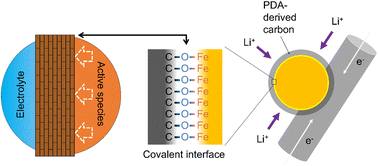Metal fluoride conversion cathodes are promising for the production of cheap, sustainable, and high-energy lithium-ion batteries. Yet, such systems are plagued by active material dissolution that causes capacity fade and hinders commercialization. Here, a covalent netting strategy is proposed to overcome this hurdle. In a proof-of-concept design, polydopamine derived carbon-mediated covalent binding inhibited the dissolution, while the pyrolyzed bacterial cellulose netting structure furnished fast electronic and ionic transport pathways. We demonstrate high-capacity, high-rate and long-lasting stability attained at practical loading levels. Our investigations suggest that the covalent netting-enabled formation of a robust and efficient blocking layer, highly competent in suppressing the leaching, is key for a stable performance. The successful stabilization of metal difluorides in the absence of electrolyte engineering opens an avenue for their practical deployment in future higher-level but lower-cost batteries, and provides a solution to similar challenges encountered by other dissolving energy electrode materials.
